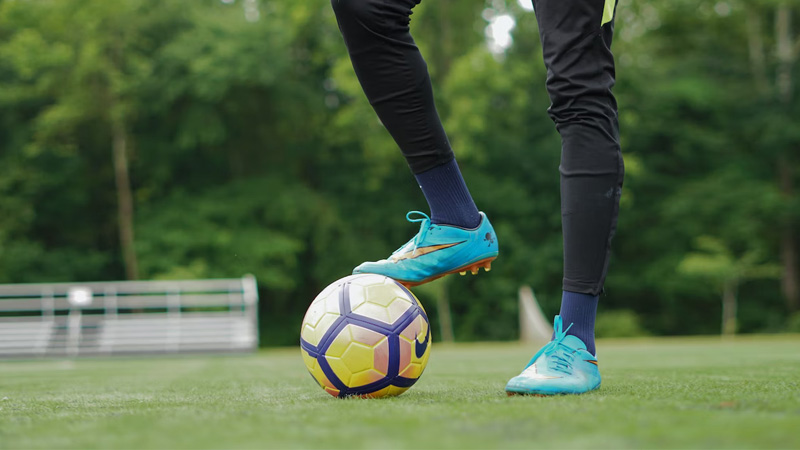Soccer often called the beautiful game, is renowned for its tactical complexity and graceful displays of skill. At the heart of this sport lies the art of passing, an essential element that can make or break a team’s success on the field.
In this comprehensive guide, we will delve into the different types of soccer passes that players employ to outwit their opponents and elevate their team’s performance.
Whether you’re an aspiring player or a devoted fan, understanding these passes will deepen your appreciation for the intricacies of the game. So, let’s dig deep into the following sections.
Types of Soccer Passes
Soccer passes come in various styles, each serving a specific purpose on the field. From the flashy No-Look Pass to the precise Threaded Pass, these techniques showcase the skill and creativity of players, allowing them to break down defenses and create scoring opportunities.
Mastering these passes is essential for any player seeking to excel in the dynamic sport of soccer.
1. Short Pass
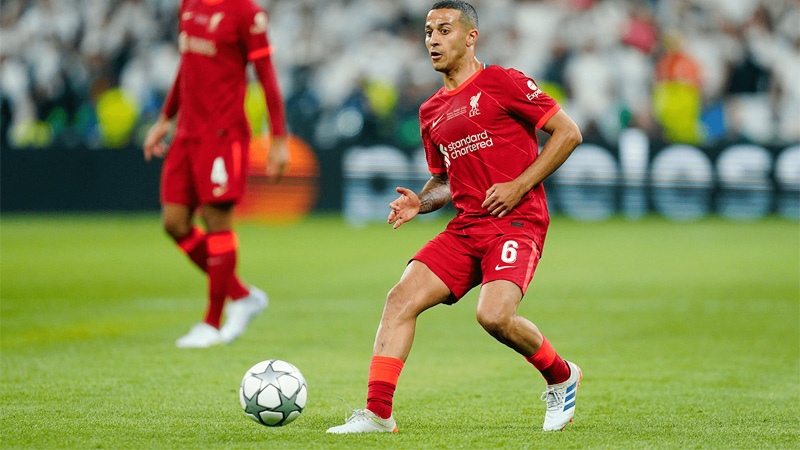
Source: statsbomb
The short pass is a fundamental and widely used technique in soccer. It involves delivering the ball to a teammate who is in close proximity, usually within a few yards. This pass is quick, precise, and crucial for maintaining possession, building attacks, and creating scoring opportunities.
Players execute short passes using the inside of their feet to ensure accuracy and control. Short passes are vital for developing the fluidity of play, retaining possession under pressure, and breaking through tight defensive lines.
Mastering this pass demands impeccable communication and understanding between teammates, as they must be aware of each other’s positioning and movements to execute short passes effectively.
2. Long Pass
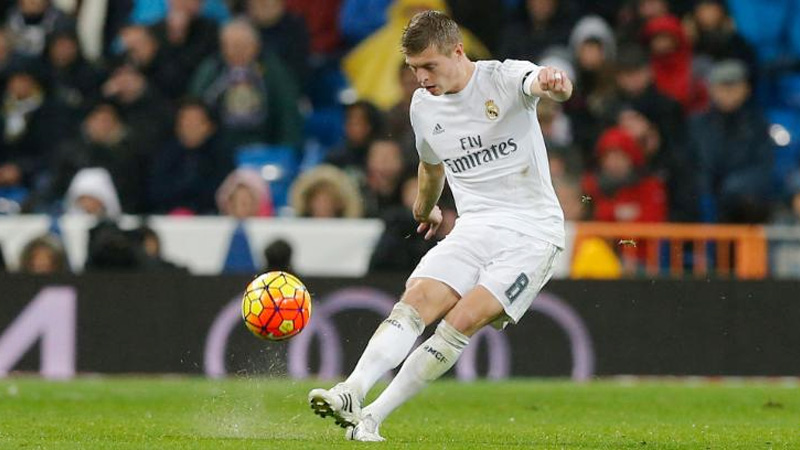
Source: realmadrid
The long pass is a powerful and strategic technique used to cover significant distances on the field. It involves sending the ball from one end to the other to bypass the midfield or defensive lines of the opposing team.
Players use various techniques, including instep drives, lobs, or even driven aerial balls to execute long passes. This pass is instrumental in counterattacks, switching play from one side of the field to the other, and finding forwards in advanced positions.
Long passes require exceptional vision, precision, and technique, as they carry the risk of being intercepted if not executed accurately. Proficient long passers are often playmakers who can change the course of a match with their well-timed deliveries.
3. Through Pass
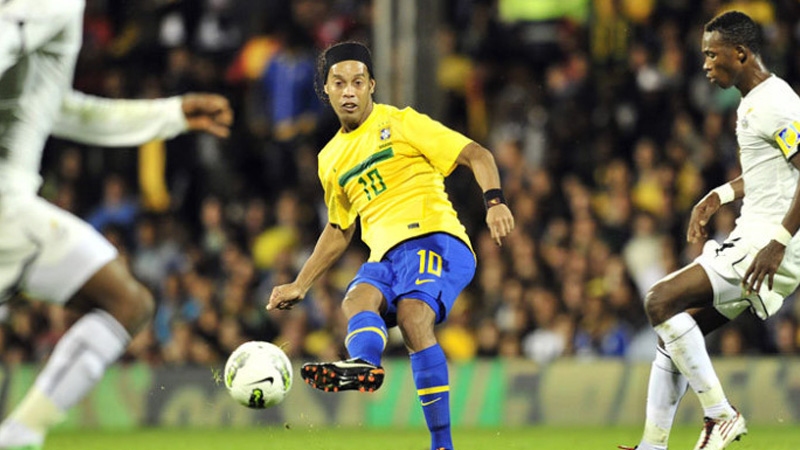
Source: soccermaniak
The through pass, also known as a “killer pass,” is a penetrating ball played into space behind the opponent’s defensive line. It is a highly potent attacking move that exploits gaps in the defense, allowing attackers to run onto the ball and create goal-scoring opportunities.
The passer needs to assess the timing and angle accurately to evade the offside trap and find the intended target. This pass demands quick decision-making, precise ball control, and intelligent movement from the receiving player.
The through pass requires a high level of synchronization and understanding between teammates, making it a beautiful and rewarding aspect of the game when executed perfectly.
4. Lob Pass
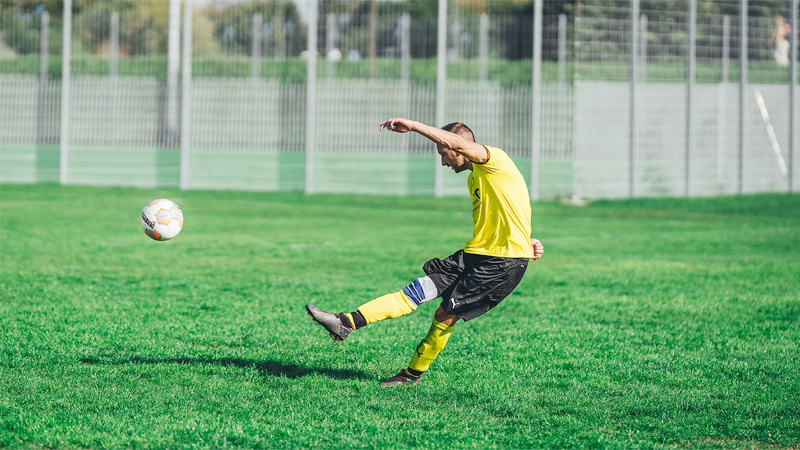
Source: soccerhandbook
The lob pass is a delicate and lofted ball played over the heads of opponents, typically to reach a teammate in a more advanced position. This pass is valuable in situations where defenders are tightly marking players or when the goalkeeper is off their line.
Executing a well-timed lob requires finesse and control, using the foot’s instep or even the outside of the foot to generate the necessary lift. Lob passes are commonly employed in aerial duels, and skilled attackers can use them to score impressive goals, chipping the ball over the goalkeeper.
However, the lob pass can be challenging to execute precisely, and misjudgment might result in losing possession or conceding a counterattack.
5. Cross

Source: theguardian
The cross is a specialized pass delivered from wide areas of the field, typically from the wings or near the corner flag, into the opponent’s penalty area. Its primary objective is to provide goal-scoring opportunities for attacking players, particularly strikers and wingers.
A well-executed cross will arc through the air, allowing the attacking players to meet the ball with their heads or feet. Crossing requires excellent technical ability, as the passer must account for the speed, height, and accuracy of the delivery.
For attackers, timing their runs and positioning themselves effectively in the box is crucial to capitalize on these crosses. Crosses are a potent weapon against defensive teams and are a common feature of many successful attacking strategies.
6. Chip Pass

Source: soccer-training-methods
The chip pass is a clever and precise pass where the ball is lifted slightly off the ground to travel over the legs of nearby opponents. Players typically use the chip pass in crowded midfield areas or when a defender tries to slide in to block a ground pass.
The technique involves striking the bottom center of the ball with precision to achieve the desired height and distance. Chip passes can be effective for quick transitions or to bypass compact defensive structures.
However, executing a chip pass accurately requires a deft touch and practice to avoid over-hitting the ball, which could lead to turnovers or counterattacks.
7. Wall Pass (One-Two)

Source: soccer-training-methods
The wall pass, often referred to as the one-two, is a combination play between two players to maneuver through tight defensive situations. It involves a quick exchange of passes, where the first passer plays the ball to a teammate and then immediately receives it back.
This technique is excellent for creating space, confusing defenders, and advancing into more dangerous areas on the field. The wall pass requires excellent timing, communication, and an understanding of each other’s movement between the involved players.
It is a staple tactic in soccer, often used by skilled attackers to unlock stubborn defenses and create goal-scoring opportunities through intricate teamwork.
8. Backheel Pass
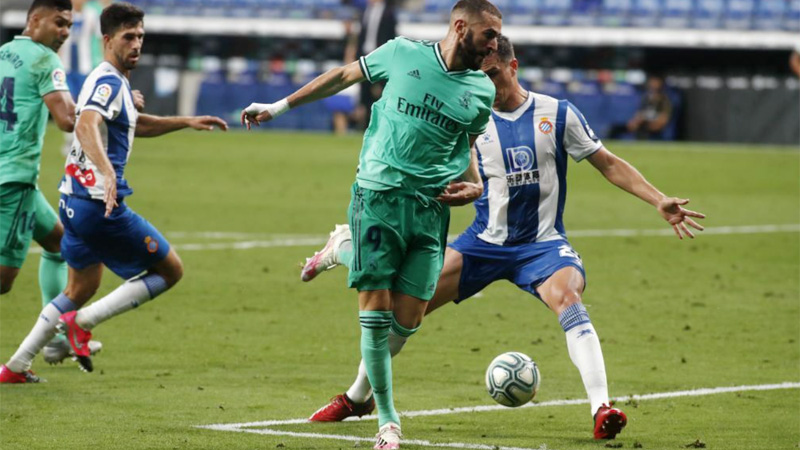
Source: soccer-training-methods
The backheel pass is a stylish and skillful technique in soccer, where a player uses the back of their foot to redirect the ball to a teammate. This pass is often unexpected, catching defenders off guard, and can be a great way to create scoring opportunities.
Players typically use the backheel pass when facing away from the intended recipient, making it a flashy and effective move during matches. Mastering the backheel pass requires excellent spatial awareness, timing, and coordination.
It’s a popular choice among creative players who love to showcase their flair on the field. Though not commonly used in every situation, the backheel pass can add a touch of artistry to the beautiful game.
9. Diagonal Pass

Source: soccerwire
The diagonal pass is an essential passing technique in soccer, enabling players to swiftly switch the play from one side of the field to the other. It involves a player hitting the ball diagonally across the pitch to reach a teammate in a more advantageous position.
This pass is especially valuable in breaking down compact defenses, as it stretches the opposition and opens up spaces on the field. Executing the diagonal pass accurately demands precise ball control, vision, and awareness of both teammates’ positions and opponents’ movements.
Top-notch midfielders and defenders often excel in delivering this pass, enabling their teams to quickly transition from defense to attack, or vice versa, with minimal touches.
10. Switch Pass
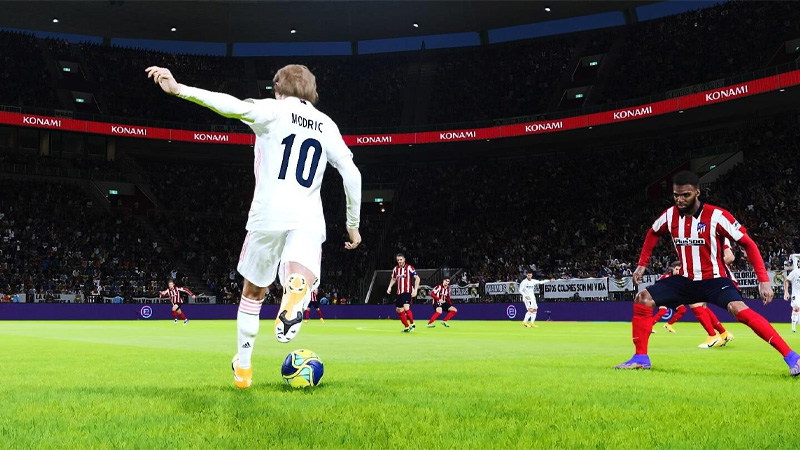
Sorce: pesmastery
The switch pass, also known as the cross-field pass, is a long-distance pass that transfers the ball from one side of the soccer field to the opposite flank. It serves as a potent offensive weapon, allowing teams to shift the point of attack swiftly and catch the opposition off balance.
The switch pass demands impeccable technique, as players must generate enough power and accuracy to cover a considerable distance accurately. This pass is particularly effective against compact defensive formations, as it quickly shifts the focus and forces opponents to adjust their positioning.
For wingers and full-backs, mastering the switch pass is crucial, as it enables them to exploit space on the weak side and create dangerous scoring opportunities for their team.
11. Ground Pass

Source: playo
The ground pass, also known as the short pass, is the fundamental building block of soccer’s passing game. Players use the ground pass to move the ball efficiently along the turf to nearby teammates.
This pass relies on precision and timing to avoid interception, making it an essential skill for every soccer player to develop. Ground passes are commonly employed in tight spaces and congested midfield areas, facilitating ball retention and quick ball circulation.
To execute a successful ground pass, players must utilize the inside of their foot, ensuring accuracy and control. It is the cornerstone of possession-based play and fosters fluid team movement, allowing players to maintain control and patiently probe the opposing defense for openings.
12. Lofted Pass

Source: the18
The lofted pass, also known as the chip pass, is an aerial technique that involves gently lifting the ball over opponents to reach a teammate. It is an invaluable skill when players need to bypass defenders who are close or when aiming for a teammate making a run behind the opposition’s defensive line.
The lofted pass requires players to generate just the right amount of power and loft to ensure the ball travels over the defenders and into the path of their intended recipient.
Mastering this pass demands a delicate touch and is often practiced through hours of training and experience. For attackers, this pass can create goal-scoring opportunities, while defenders can use it to relieve pressure and transition into attack mode swiftly.
13. Curled Pass
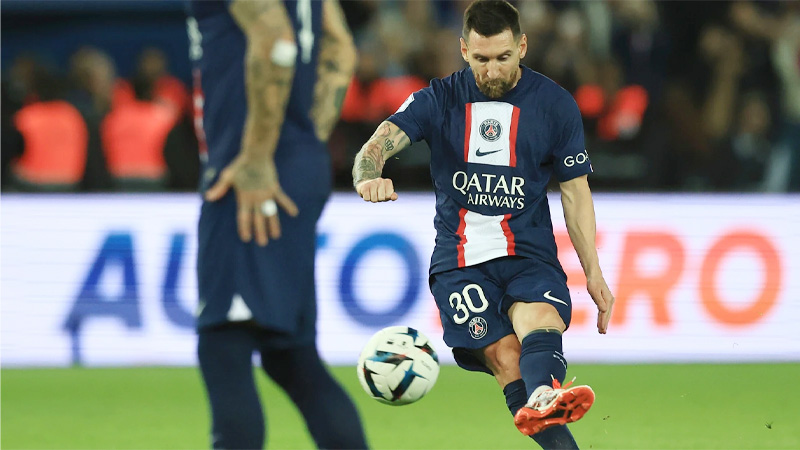
Source: hindustantimes
The curled pass is a passing technique that involves bending the ball around defenders or into tight spaces using the inside or outside of the foot. This pass is particularly useful in situations where straight passes would be intercepted or blocked by opponents.
Skilled players can put a spin on the ball to make it curve, allowing them to reach teammates with precision and finesse. The curled pass is a valuable asset for players operating in congested midfield areas or when trying to pick out a teammate making a run behind the defensive line.
It requires exceptional ball control, footwork, and an understanding of ball physics. With the right technique and practice, players can use the curled pass to unlock stubborn defenses and create goal-scoring opportunities.
14. Blind Pass

Source: goalfixsports
The blind pass is a daring and intuitive move that involves passing the ball to a teammate without directly looking at them. It is often employed to surprise opponents and maintain a fast tempo during a match.
Players execute blind passes to exploit spaces they anticipate their teammates will occupy, trusting their positional awareness and understanding of each other’s playing styles. This pass can be risky, as it relies heavily on communication and chemistry within the team.
Midfield maestros and creative playmakers are more likely to utilize blind passes as they possess the vision and confidence to pull it off effectively. When executed successfully, the blind pass can leave defenders bewildered and elevate a team’s attacking dynamics to a whole new level.
15. No-Look Pass
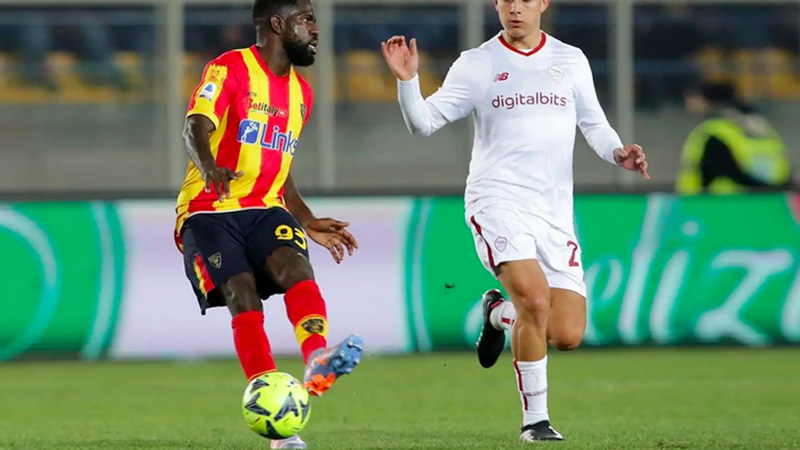
Source: tribuna
The No-Look Pass is a dazzling soccer move that requires exceptional spatial awareness and split-second decision-making. As the name suggests, this pass is executed without the player looking in the direction of the intended recipient.
Instead, the passer uses their peripheral vision and knowledge of teammates’ positions to deliver the ball accurately. This pass is often employed to deceive opponents and catch them off guard, creating scoring opportunities.
It demands a high level of skill and trust among teammates as precise timing and positioning are crucial. When executed correctly, the No-Look Pass can add an element of surprise and flair to the game, making it a favorite among fans and players alike.
16. Threaded Pass
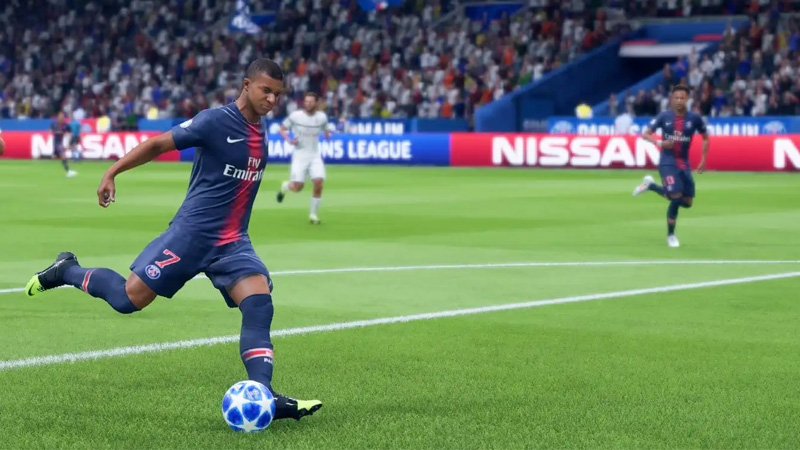
Source: twinfinite
The Threaded Pass is a technique that requires pinpoint precision and vision on the part of the player. It involves sending the ball through a tight and narrow opening between opposing defenders to reach a teammate.
This pass is particularly useful in breaking through defensive lines and creating scoring chances in congested areas of the field. Executing a Threaded Pass demands not only excellent passing ability but also an understanding of the movement patterns of both teammates and opponents.
Mastering this technique allows players to exploit even the smallest gaps in the defense, showcasing their ability to control the tempo of the game and change its dynamics with a single pass.
17. Outside-of-the-Foot Pass

Source: shootscoresoccer
The Outside-of-the-Foot Pass, also known as the “Trivela” in some regions, is a stylish and effective method of delivering the ball with finesse. Players use the outside part of their foot to make this pass, adding a curving effect to the ball’s trajectory.
This technique allows players to quickly change the direction of the pass, making it challenging for defenders to intercept. The Outside-of-the-Foot Pass is often employed for long-range deliveries, crosses, or cutting the ball across the field swiftly.
While it requires a certain level of technical proficiency, its deceptive nature and the element of surprise it brings to the game make it a valuable weapon in a player’s passing arsenal.
18. Slide Pass

Source: Squawka
The Slide Pass is a dynamic and low-profile pass that is typically executed while sliding on the ground. This pass is useful when a player needs to quickly release the ball while maintaining a low center of gravity.
It is commonly employed in close-quarters situations where standing passes might be easily intercepted. The Slide Pass is particularly effective in wet or muddy conditions when regular passes are difficult to control.
Skilled players can use the Slide Pass to slice the ball through the defense or feed it to a teammate with greater accuracy. However, mastering this pass requires practice to avoid fouling opponents and ensure the ball reaches its intended destination.
19. Flick Pass
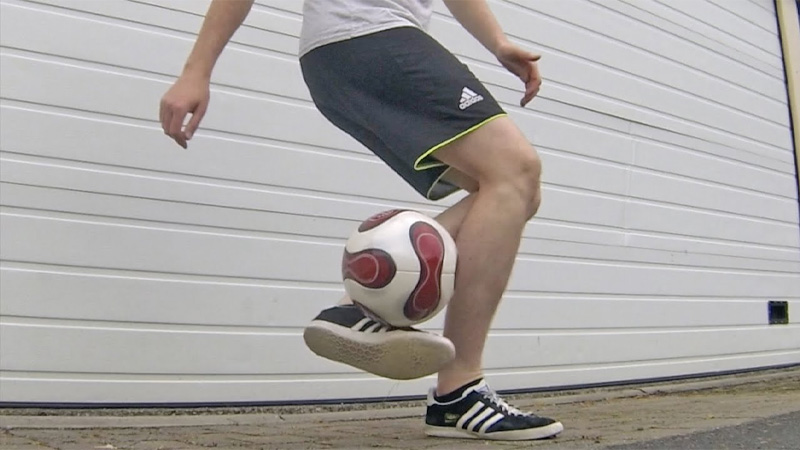
The Flick Pass is a creative and imaginative passing technique that involves redirecting the ball using a flick of the foot. Players use the front or back of their heel, toe, or even the outside of the foot to add spin and loft to the pass.
This pass is often utilized to surprise opponents, especially in tight spaces or when under pressure. It can be used to set up teammates for shots on goal, evade defenders, or even execute trick plays.
The Flick Pass requires a combination of skill, timing, and confidence, and players who have mastered it can add an element of flair and ingenuity to their team’s playing style.
20. Dummy Pass
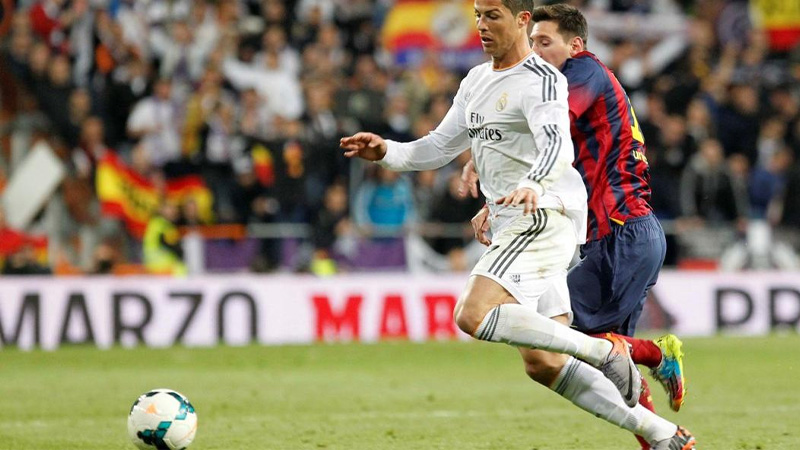
Source: onzemondial
The Dummy Pass is a tactical maneuver designed to deceive opponents and create confusion in the opposing team’s defense.
In this pass, a player intentionally pretends to receive or play the ball. Then, he cleverly allows it to pass through their legs or steps away from its path at the last moment, leaving the ball for a teammate behind them.
This strategic move tricks the defenders into reacting to the dummy recipient, leaving space and time for the actual intended player to receive the ball unmarked.
The Dummy Pass is a powerful weapon to break down defensive lines and exploit their anticipation, making it an essential part of a team’s attacking repertoire.
In a nutshell, soccer is a game of intricate passing, and these diverse types of passes each bring their own unique advantages to a team’s gameplay.
FAQs
What are the different types of soccer passes?
There are several types of soccer passes, including the No-Look Pass, Threaded Pass, Outside-of-the-Foot Pass, Slide Pass, Flick Pass, and Dummy Pass. Each pass has its unique characteristics and tactical applications.
What is the purpose of a No-Look Pass?
The No-Look Pass is executed without the player looking at the intended recipient, aiming to surprise opponents and create scoring opportunities by maintaining an element of unpredictability.
How does a Threaded Pass differ from other passes?
The Threaded Pass requires precise accuracy to navigate the ball through tight spaces between defenders, making it an effective tool for breaking through defensive lines and setting up goal-scoring chances.
When should players use an Outside-of-the-Foot Pass?
The Outside-of-the-Foot Pass is ideal for delivering curved and deceptive passes, making it valuable for crossing the ball or changing the direction of play with finesse.
How is the Dummy Pass utilized strategically?
The Dummy Pass involves tricking defenders into reacting to a pretend recipient, creating space for the actual intended player to receive the ball unmarked, effectively destabilizing the opposing team’s defense.
Wrapping Up
Mastering the various types of soccer passes is a fundamental aspect of becoming a well-rounded player. The ability to execute these passes with precision and timing can elevate a team’s performance, leading to more cohesive and dynamic gameplay.
Whether you’re a player looking to enhance your skillset or a soccer enthusiast seeking a deeper understanding of the sport, embracing the art of passing will undoubtedly enrich your experience of the beautiful game.
So, step onto the field with confidence, and let these diverse passes be your gateway to soccer excellence. Best of luck.

